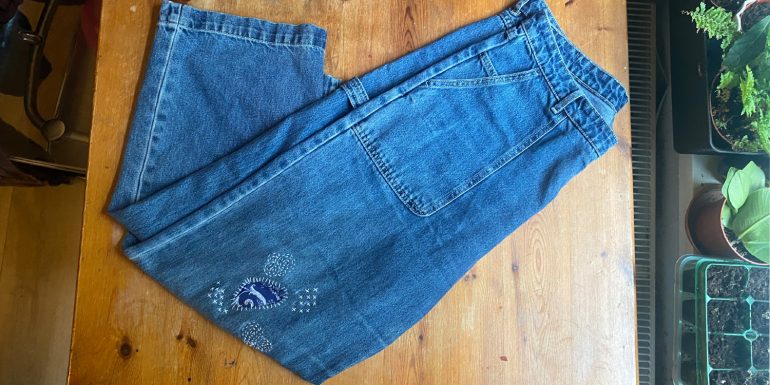Why are we still throwing our clothes away? A third of unwanted clothes in the UK end up in landfill, but not these jeans
The time has come for another spring clean and that same old pair of jeans is still sitting in your wardrobe. You had this dilemma last year: to keep or to get rid?
Before you reach your decision, consider this: each year, 92 million tonnes of textile waste is produced across the world, according to the waste management company Business Waste.
The fashion industry contributes to 10% of all greenhouse gas emissions, with the UK producing the seventh most textile waste in the world and the average person spending almost £1000 on new clothes each year.
Meanwhile, we’re neglecting the clothes hiding in the back of our wardrobe, and throwing things away instead of taking the time to mend them. So, maybe for this year’s spring clean, it’s time for some upcycling.
I found this old pair of jeans, which have been well-worn and well-loved to the point they’re falling apart slightly. You might think now is the time to throw them away, that they’re not even worthy of the charity shop, and it doesn’t cross most people’s minds to even think of recycling clothing. But there’s another way. Let me introduce you to visible mending.
Sashiko is a traditional Japanese form of functional embroidery used to reinforce worn points of clothing and repair holes and tears. This varies from a simple cross pattern to intricate designs. I used this technique to upcycle my jeans, restoring them from a sad, holey mess back to their former glory.
What you will need:
– Your item of clothing that needs mending
– A piece of scrap fabric big enough to cover the hole
– Pins
– A needle
– Thread – I used sashiko thread which is non-divisible so the strands don’t come apart, but you can also use embroidery thread for a similar look
– Scissors
You can find all of this at your local craft store – support local businesses and not J*ff B*z*s
And the best thing is, it’s really easy for beginners! Here’s how to do it:
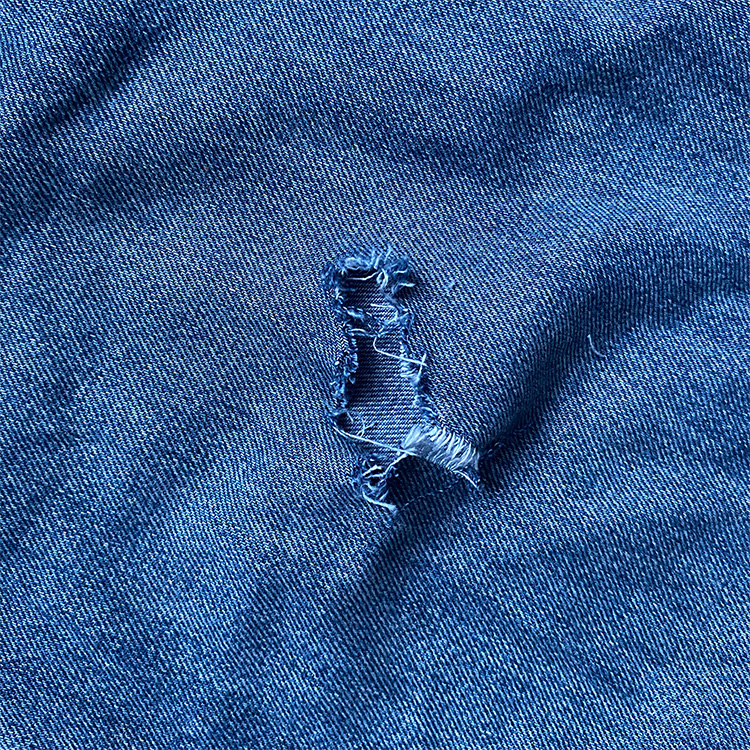
Decide what look you’re going for – if you want a cleaner look, you can fold the edges of the hole in so the frayed edges aren’t on display.
Place your patch behind the hole and pin in place around the edges of the hole and the edges of the patch.
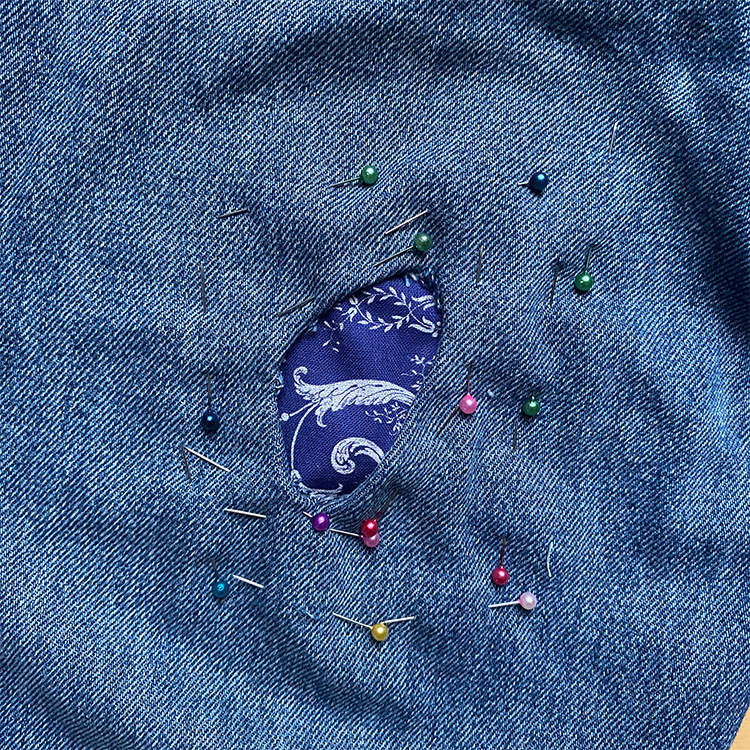
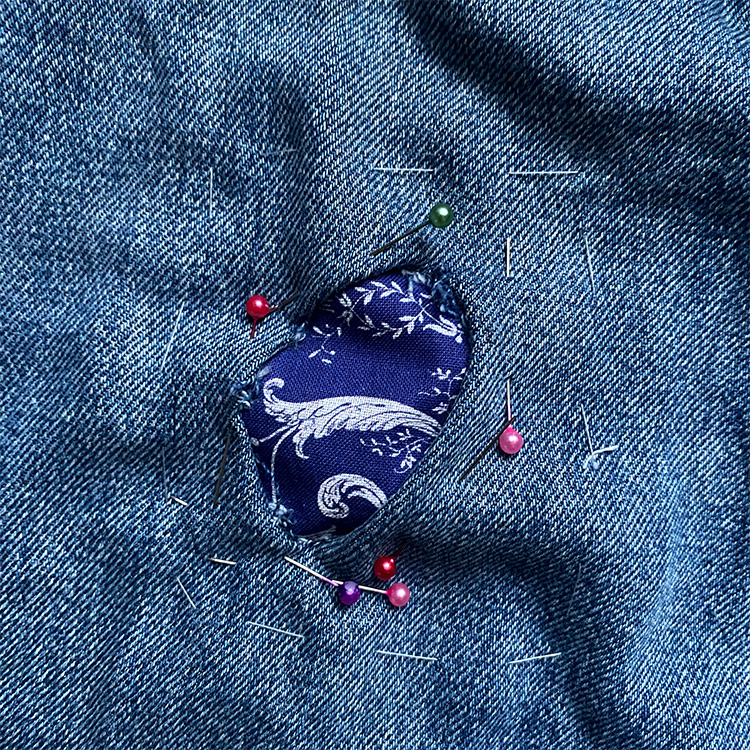
Attach the patch using a running stitch around the edge in a similar colour to your fabric.
Sew around the hole using a whip stitch.
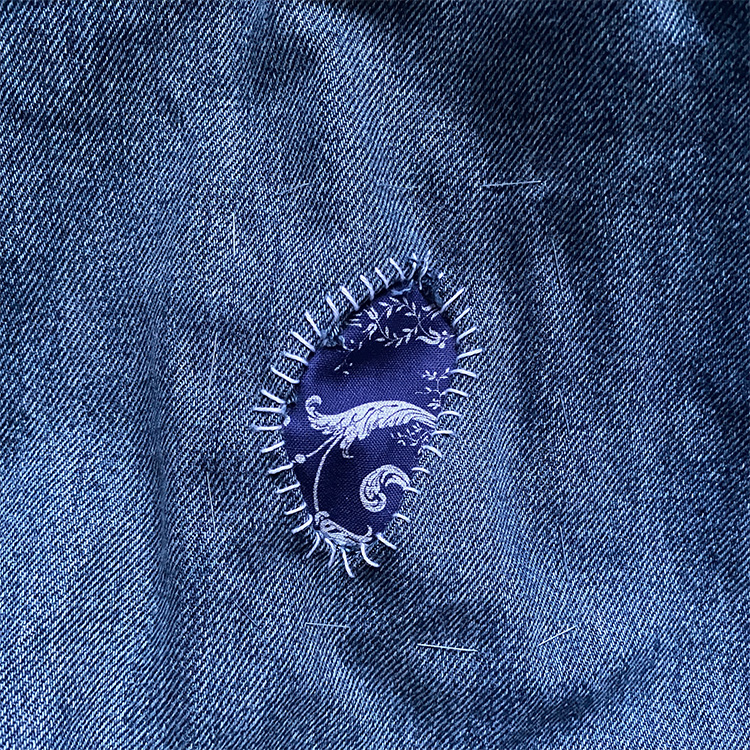
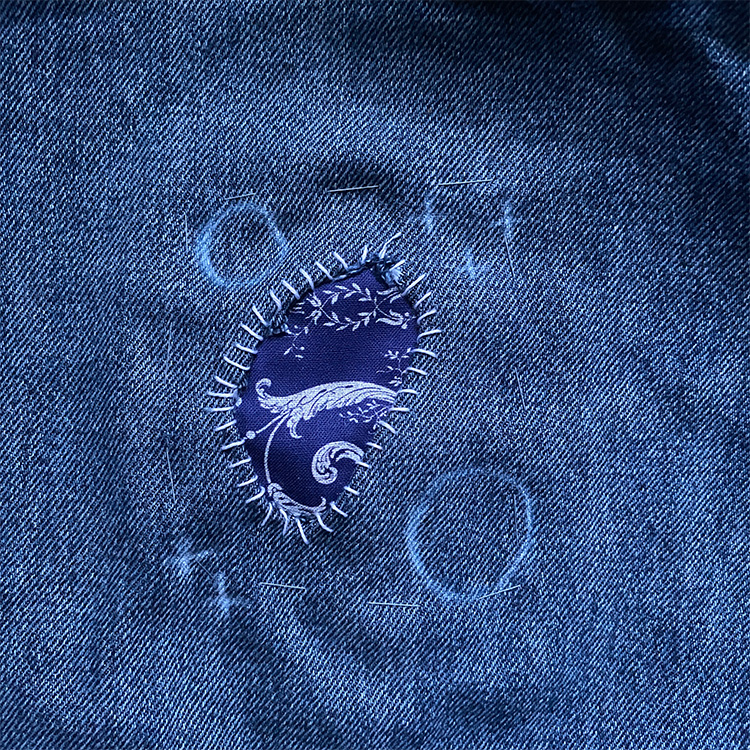
Draw on your design with a fabric marker. You can also use stencils or freehand if you prefer.
Sew along these lines in a contrasting colour.
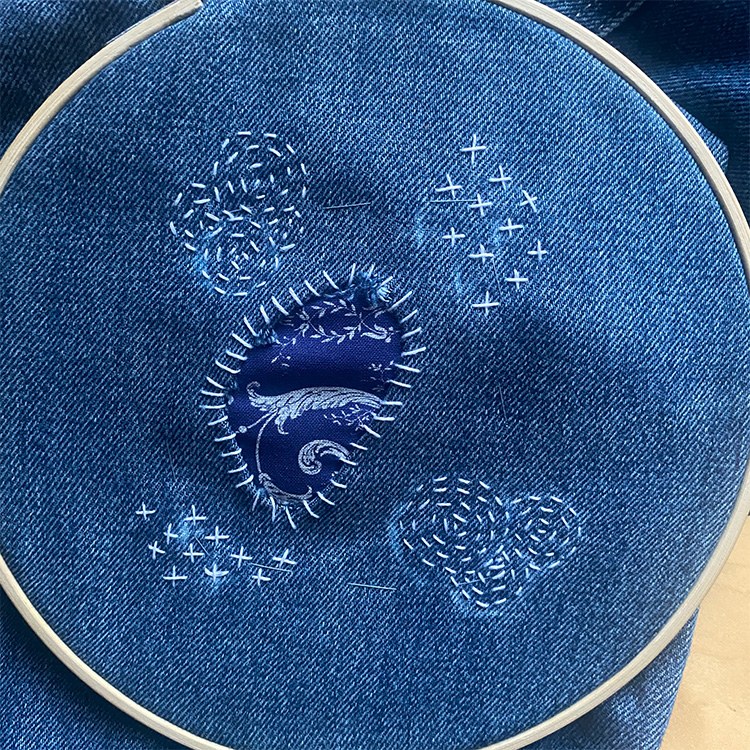
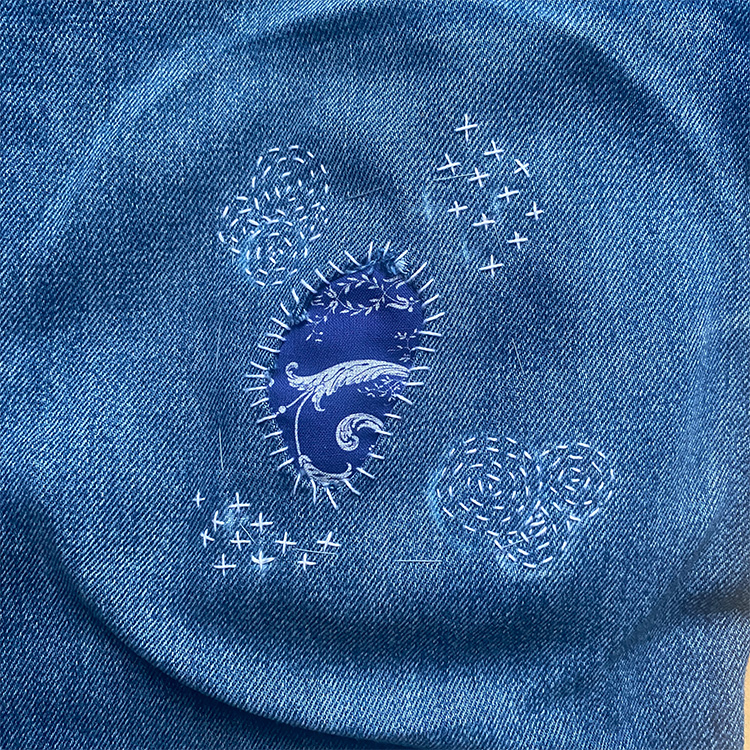
Tie off and trim the ends and you’re done! You can also trim away the running stitch used to attach the patch, as the embroidery is enough to hold It in place.
That’s all it takes – a needle, thread, and a couple of hours and you’ve not only got a one-of-a-kind piece, you’ve also saved yet another item of clothing from meeting its doom and killing our planet.
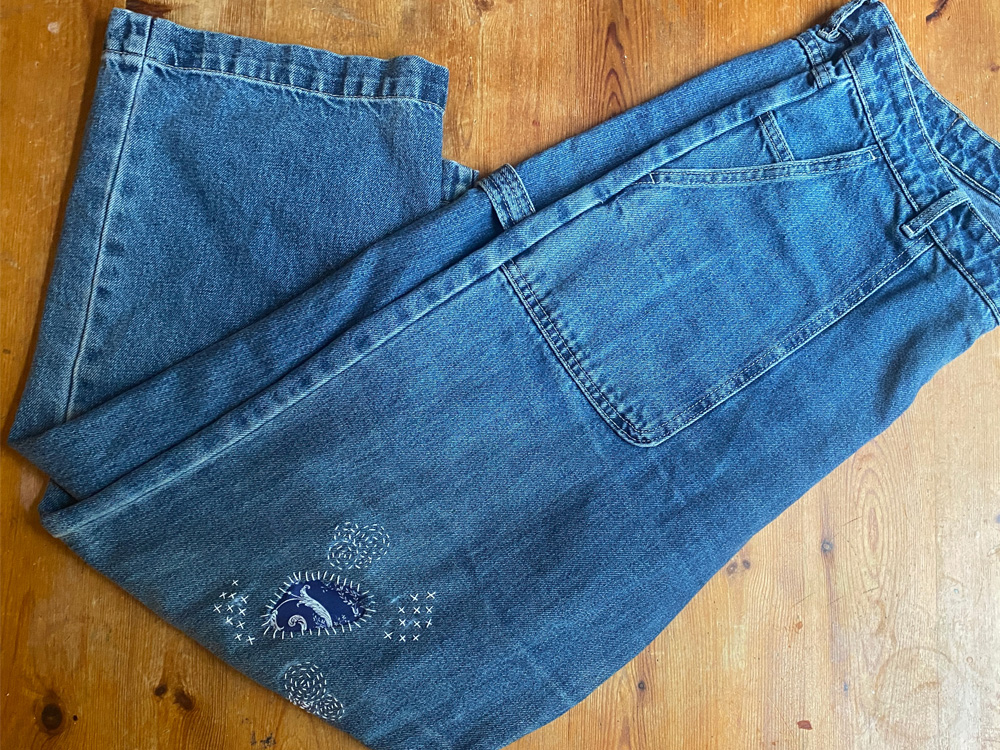
It’s not just your old jeans that can be saved, your food scraps can too. Read this guide to ditching the waste and using your fruit and vegetable scraps to make chutney.

